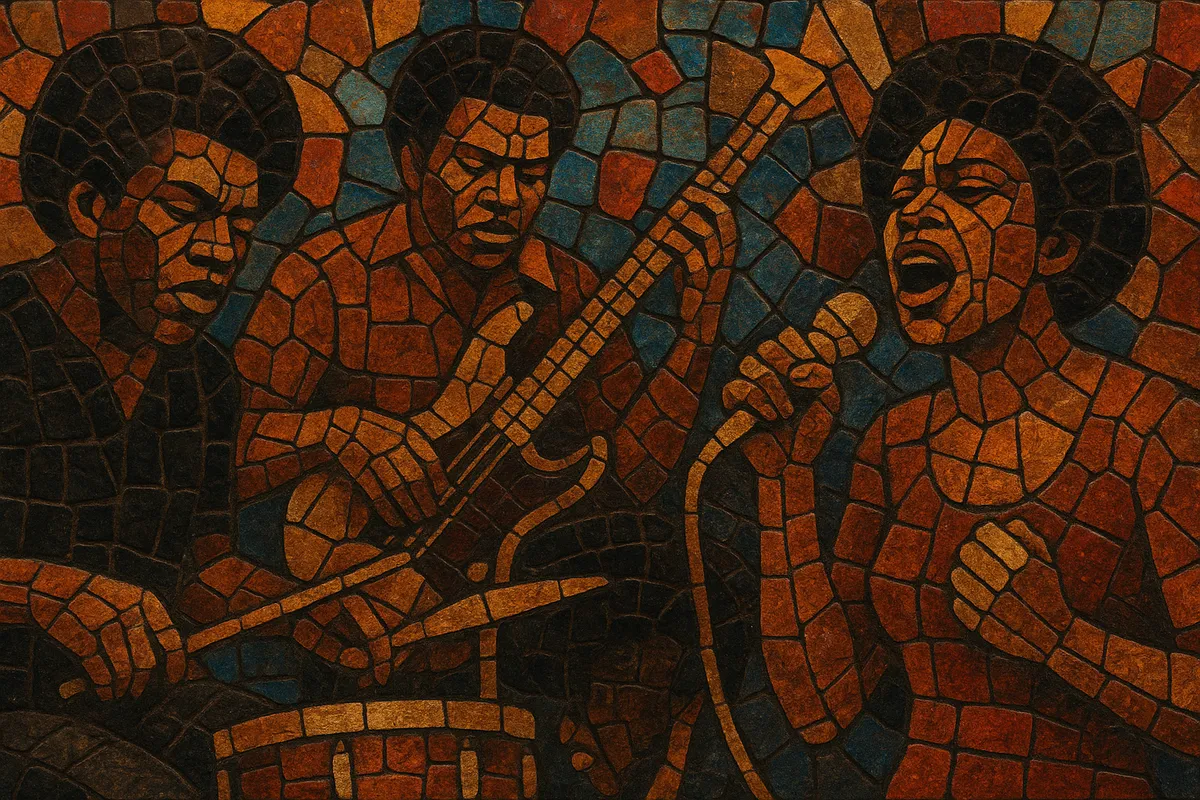Deep funk is a raw, hard-edged strain of funk that prioritizes drum-and-bass-driven grooves, terse horn stabs, and gritty, unpolished production.
Emerging at the tail end of the 1960s, it captures the most stripped-down, rhythm-first aspects of funk—vamps on one or two chords, prominent syncopation, and an emphasis on “the one” —often recorded by regional bands on small labels and released as 7-inch singles. Vocals tend to be call-and-response or fervent shouts, while instruments such as drum kit, electric bass, rhythm guitar, Hammond organ or clavinet, and tight horn sections carry the energy.
The term “deep funk” later became associated with crate-dug obscurities and a 1990s/2000s revivalist movement that honored the sound’s rugged, dancefloor-focused aesthetic.
Deep funk crystallized in the United States in the late 1960s as the most hard-hitting, rhythm-forward distillation of funk. Building on soul and R&B foundations and the innovations of James Brown and his bands (where the beat is organized squarely around “the one”), small regional groups recorded raw, punchy sides for local labels. The grooves were lean, repetitive, and irresistibly danceable, often pressed as 7-inch singles for clubs.
Through the early 1970s, deep funk thrived in pockets—New Orleans (The Meters, Eddie Bo), the Midwest, and across countless independent labels. As mainstream funk and soul moved toward more polished, orchestrated, or disco-oriented productions, many deep funk recordings slipped into obscurity, surviving primarily on rare 45s and in DJ sets.
In the UK, the rare groove scene and dedicated DJs/collectors (notably Keb Darge) championed high-energy, hard-to-find funk sides, popularizing the term “deep funk” to describe especially rugged, drum-heavy tracks. Hip hop producers and breakbeat aficionados also raided these records for drum breaks, helping to canonize the style’s rhythmic DNA.
Labels like Desco and Daptone spearheaded a revivalist movement that recorded new music with period-appropriate gear and methods. Artists such as Sharon Jones & the Dap-Kings, The Budos Band, and The Poets of Rhythm revived the classic sonics—tape saturation, close-miked drums, dry rooms, and horn-driven riffs—reintroducing deep funk to new audiences and dancefloors.
Deep funk’s influence is embedded in hip hop sampling, the breakbeat and big beat movements, and modern retro-soul scenes. Its lasting appeal rests on its primal groove, immediacy, and the tangible feel of musicians playing tightly interlocked patterns for the dancefloor.


